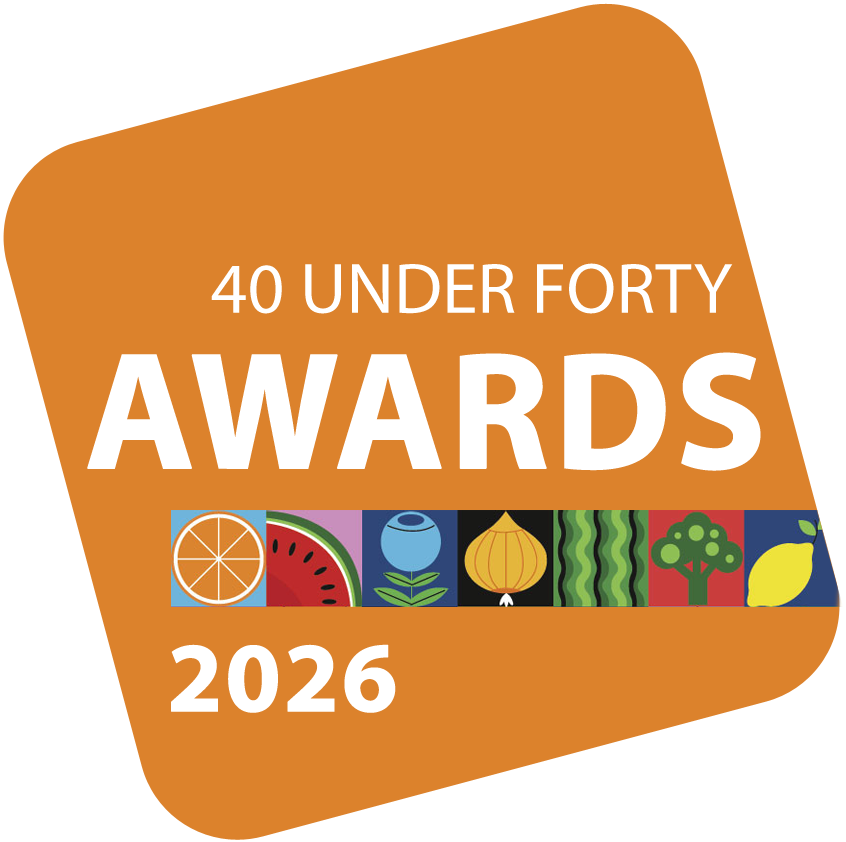Global Trade Symposium Kicks Off Show
December 20, 2023 | 11 min to read
The New York Produce Show, featuring the Global Trade Conference, began on December 5 with Gustavo Yentzen emphasizing the need for increased global collaboration in the fresh produce sector. Miguel Gomez highlighted rising demands in urbanizing regions and opportunities in India and Southeast Asia, despite U.S. export challenges. Discussions centered on trade infrastructure necessities and the importance of quality in meeting consumer demands. Overall, the event showcased a flourishing industry eager to explore vast market potential and overcome existing challenges.
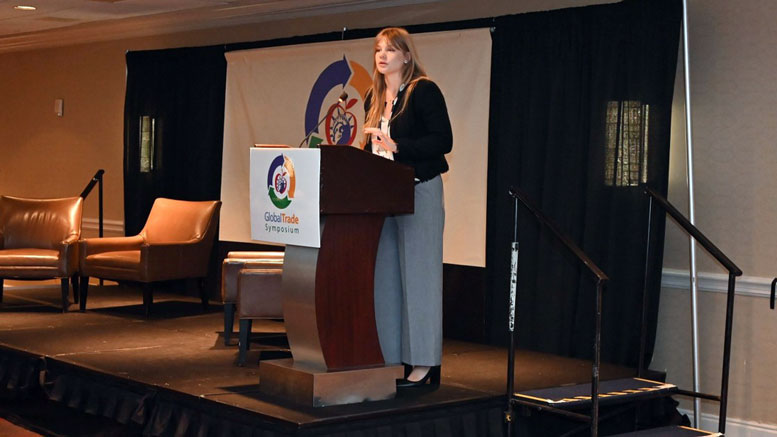
The New York Produce Show and Conference kicked off with the annual pre-show Global Trade Conference, Dec. 5. In his opening remarks, moderator Gustavo Yentzen, chief executive, The Yentzen Group, laid the day’s foundation. “We have come to learn, share, increase our understanding, provide information, address mutual challenges and opportunities, and hopefully leave in a much better position to help our businesses thrive in the future.”
And learn we did. The fresh produce trade is truly globalized, and demand is everywhere, emphasized Miguel Gomez, Robert G. Tobin Professor of Food Marketing at the Dyson School of Applied Economics, Cornell University. Infrastructure investments in developing countries lead to increased demand for high-value fruits and vegetables, particularly in urbanizing regions with rising incomes and health concerns. In tandem, increasing global trade agreements and efficient supply chains lead to more affordable fresh produce for consumers. However, North America lags in export opportunities to Asia, with most fruits and vegetables imported from South America and Central America.
As the industry becomes more global, Gomez emphasizes there will be a need for coordination and technical expertise across continents to manage seasonal production and ensure quality control throughout the supply chain.

Gomez’s comments were re-emphasized by Shelby Sackett, market development manager, Bryant Christie Inc., who looked at export challenges and opportunities.
In 2022, Canada accounted for 55% of U.S. fresh produce exports by value, or about $3.8 billion. Mexico is a distant second, accounting for 15% of exports by value. No other market accounted for more than 5%, a fact Sackett calls a “huge opportunity,” particularly emerging markets in India, Southeast Asia (Indonesia, the Philippines and Thailand) and South America. She cites numbers from India, where household spending is expected to exceed $3 trillion by 2027, as disposable incomes rise by 4.6% annually.
“The rise of middle class in these countries is not just a demographic shift, it’s an important economic force,” Sackett notes. “As disposable incomes grow, so does the appetite for diverse, high-quality produce.”
“There are numerous markets that require additional investment from us to develop, but there’s a lot of money out there that could be made,” Sackett says.
Sackett is blunt, however that the U.S. produce industry faces challenges due to lack of new trade deals and high tariffs. Growing competition from foreign producers is a huge issue for U.S. suppliers. Fresh produce exports for Mexico, Peru, China and North Africa have grown exponentially over the past 10 years and now directly compete with U.S. ag products. These markets have multilateral trade deals that reduce their tariffs to zero while the U.S. faces 5% to 50% tariffs, which completely alters the market.
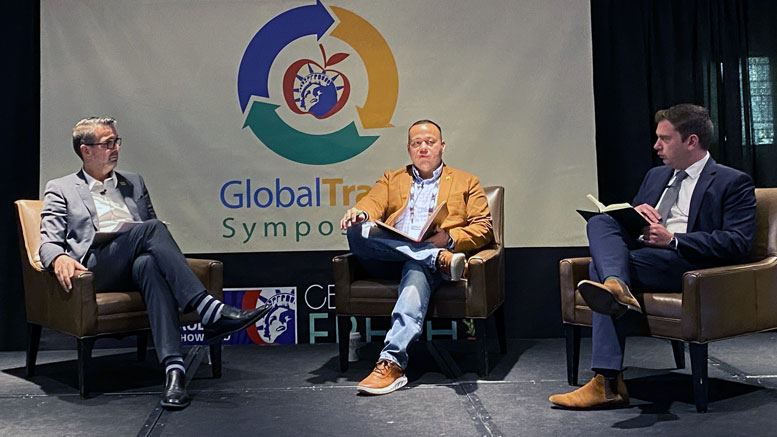
The Global Trade Symposium also looked at the produce trade by land or sea, with two panel discussions, both moderated by Derek Miller, of the American Association of Port Authorities, looking at land ports and seaports in the U.S.
The land port panel featured Ron Lemaire, president, Canadian Produce Marketing Association, and Tony Martinez, Primo Trading Services, McAllen, TX. Both cited the need for investments in supply chain infrastructure, particularly cold chain to preserve quality, and Lemaire asks how the industry can focus on data, and accessing it for the common good.
Produce is essential, Lemaire emphasizes, and jurisdictional alignment needs to be collaborative. “How do you put a regulatory framework in place that makes sure your product gets through the port and doesn’t just sit there?”
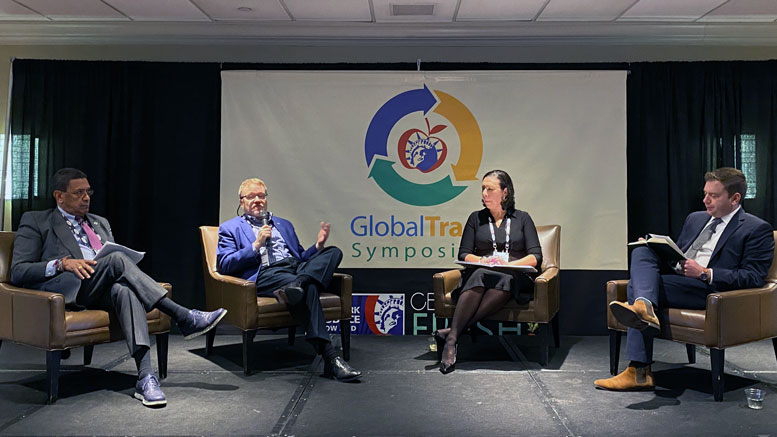
Joining Miller on the seaport panel were Dominic O’Brien, Port of Philadelphia; Amanda Valdes, Port Authority of New York and New Jersey; and Jean Elie, Port of the Everglades.
All are looking at infrastructure improvements, from improved land access to improved rail connectivity, cold storage facilities, environmental and overall modernization, but federal and state funding is not enough or difficult to secure.
None of the panelists anticipate congestion that hampered ports during and following the pandemic, but they’re also taking advantage of this period of less volume to reassess what they can do better moving forward “because there will be disruptions and there will be surges and there will be unexpected, unanticipated events,” Valdes says.

The morning program concluded with a panel looking at import challenges and opportunities, moderated by Manuel Jose Alcaino, of Decofrut. Panelists included Priscilla Lleras-Bush, Peruvian Asparagus Importers Association; Ami Ben-Dror, Dorot Farm; and Paul Jaffa, Global Harvest Produce.
Seasonality and quality surfaced several times, as some commodities have become a 52-week program due to consumer demand and global supply. It’s great if the quality is there, but it hurts the industry if the quality isn’t there. “It’s all about customer experience,” Jaffa says. “Once they have a poor experience with any commodity, you’re going to lose that customer.”
Importers are challenged by retailers to have a 52-week program, “and it’s a double-edged sword,” Lleras-Bush says. “When we source products from different countries, it’s not necessarily the quality, but it’s the flavor that’s not the same. And so, if we sacrifice flavor, we compromise the experience for the consumer. What does that end up doing? That jeopardizes and possibly affects the per capita consumption on that specific commodity.”
The panelists also raised the issue that perhaps brand, rather than country of origin, matters more to consumers.
Bottom line, the supply chain, including weather issues, and related costs are going to drive future imports. Retailers want a consistent supply, emphasized Dror, and developing partnerships between suppliers and retailers could increase sales and success for everyone.
AVOCADOS
After the Networking Lunch, moderator William Watson, The Fresh Approach, kicked off an avocado discussion. Panelists included Maggie Bezart-Hall, La Bonanza Avocados; Hector Soltero of Mission Produce; and Jorge Molina of Colombia Avocado Board.
The panelists all agreed the future is bright for avocados, and 2024 will be a good year. “Everyone is looking at Colombia for avocados. We have a bright future, but we have to be humble. We have a big, big mission to grow these avocado fruits,” says Molina.
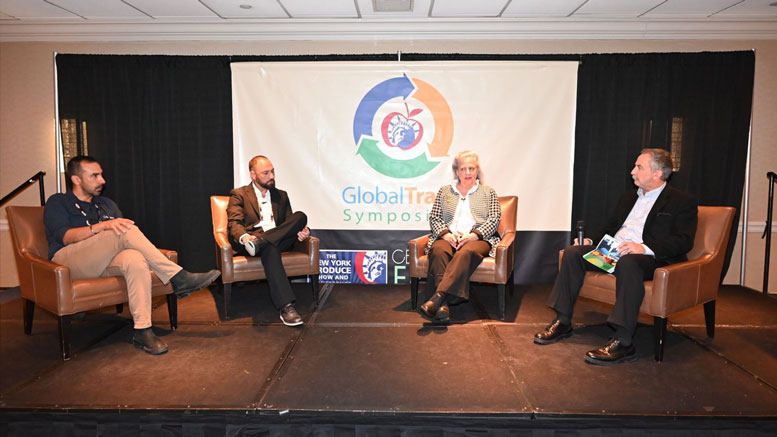
MARTY WHITACRE/PRODUCE BUSINESS PHOTO
There are challenges in the U.S. market from a producer’s standpoint. Consumers prefer to see a big avocado rather than a small one and they want more and more avocados every year. Molina explained that in the past three months, there have been small sizes. “For me, that’s a nightmare,” says Molina.
The challenge is being able to supply customers 365 days a year while maintaining the quality of the fruit.
Another challenge is the weather. “Mother Nature is our biggest factor, and she just doesn’t love produce,” says Bezart-Hall.
Labor and inflation are also big issues with the imports of avocados. “The price of avocados is high. I see a lot of upside right now,” says Soltero.
Soltero says Guatemala is at the forefront of avocado exports, while South Africa and China aren’t far behind.
CITRUS
Alcaino moderated a Citrus Update, and panelists included Zak Laffite, Wonderful Citrus; Christian Harris, Sunkist Growers; and Mayda Sotomayor-Kirk, Seald Sweet/Univeg; and Carlos Boney, AM Fresh.
Citrus has grown, but not as much as the other commodities. Oranges lost 1% in consumption in the last 10 years, but grapefruit is making a bit of a comeback.
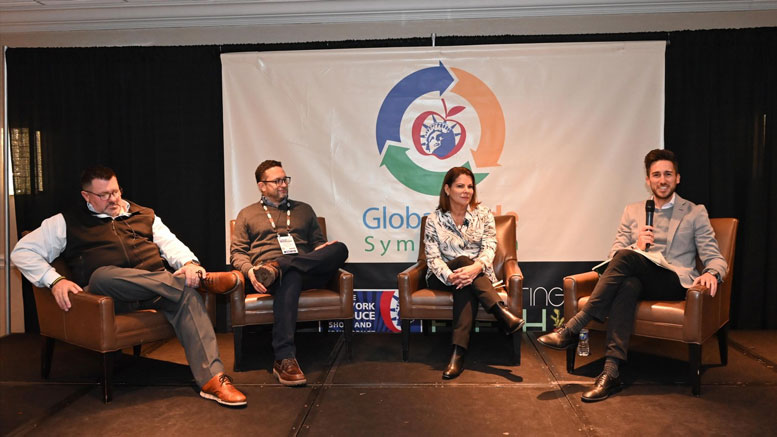
MARTY WHITACRE/PRODUCE BUSINESS PHOTO
“Run promotions in the middle of the summer for grapefruit. Doing promotions is becoming quite successful,” says Harris.
But grapefruit is a marketing challenge. Consumers don’t know how to eat it or when to eat it, so education is key.
The panelists agreed good quality, good pricing and good product are key and growers should work as a team. “At the end of the day, the brand doesn’t stand for anything, unless there is quality behind it,” says Harris.
“Citrus is a 15-year journey. You can always bet on the wrong thing, and that’s an expensive bet,” says Laffite.
Looking to the future in citrus, there is work to do in marketing and selling. Harris says the balance of global supply will be interesting in the next 20 years in citrus.
“The challenges are unique for established varieties. How do we keep it relevant as generations turn? Take a different spin on it,” says Laffite.
Sotomayor-Kirk says the Latin and Asian population is growing, so there is hope for the future.
GRAPES
Moderated by Alcaino, panelists for the Grape Update included John Pandol, Pandol Brothers; Tom Kovacevich, TKM Produce; and Stephanie Cavallo, AM Fresh.
This year, prices are much higher than the years before. California held on a lot longer than expected, and Peru has been much lower in volume than anticipated.
There have been 25% more boxes in the last two years, but there is a lot more fruit that doesn’t get sold, says Pandol.
There have been many different grape varieties in recent years and the consumer largely doesn’t know the difference. “Varieties are a retailer’s dream and the grower’s nightmare,” says Pandol.
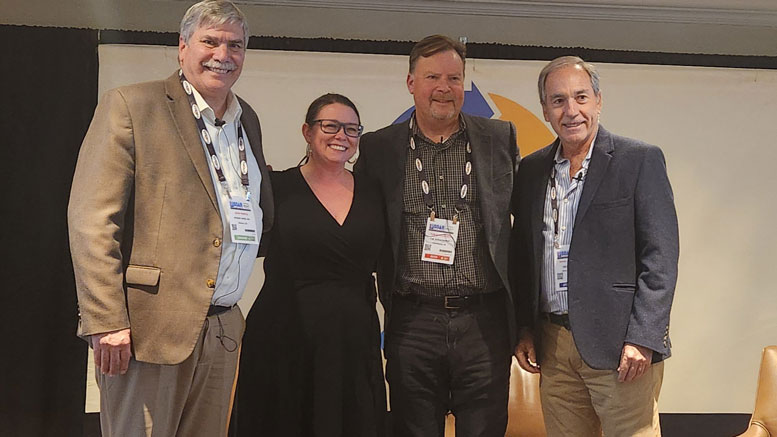
AIMEE TENZEK/PRODUCE BUSINESS PHOTO
To increase grape consumption one of the main things the industry will need to do is educate the consumer. “We have to do a better job of educating the consumer. The industry as a whole is investing in itself. We have to educate, and maybe they will choose grapes over potato chips,” says Cavallo. “It’s going to be better for everyone if people are eating more grapes.”
Cavallo says grocers need to invest in their in-store personnel so they can educate consumers and also have knowledge about displays and freshness.
Pandol says people are more cautious about buying anything they may throw away. “The characteristics matter — texture, taste and lack of defects,” he says.
Kovacevich considers the future of grapes an “exciting revolution.”
“It’s inevitable that we will have great success selling to the consumer,” he says.
MANGOS
Mangos have the potential to become one of the top fruits consumed in the U.S., according to Daniel Spellman, marketing director of the National Mango Board, who moderated the Mango Update Panel at the Global Trade Symposium.
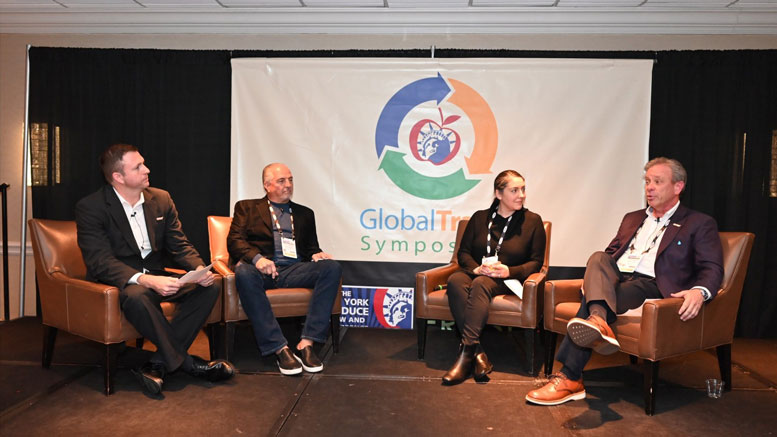
MARTY WHITACRE/PRODUCE BUSINESS PHOTO
A growing Hispanic and Asian population, plus the fruit’s versatility, are sales drivers, says Albert Perez, chief executive of Continental Fresh, while educating mainstream consumers on the uses and benefits of mango can move the consumption needle on this tropical fruit, says Gary Clevenger, managing member of Freska Produce International, who added that his company’s mangos are now fair trade certified in response to retail demand.
Greg Golden, owner of Amazon Produce Network, and Amanda Horney, Midwest sales representative at London Fruit, was also on the panel.
The 14th annual New York Produce Show and Conference (NYPS) opened Dec. 5. The event had a record audience of more than 5,000 executives attending the one-day trade show and three co-located events. There were 350-plus exhibiting companies and a record of 41 sponsors. The New York Produce Show is organized by Produce Business and the Eastern Produce Council.
SAVE THE DATE!
Mark your calendar for next year’s New York Produce Show and Conference: Dec. 10-12, 2024.
And exhibitors, book your booth now, as there’s a limited time to maintain the current booth rate. Visit www.nyproduceshow.com/exhibit2024 or talk to your sales representative before Jan. 12 to lock in the 2023 rate!

